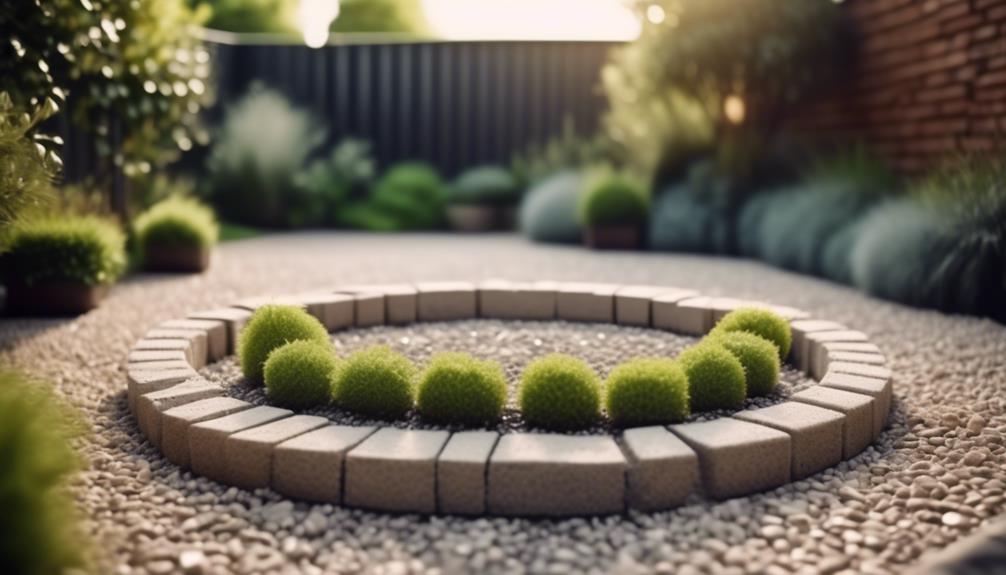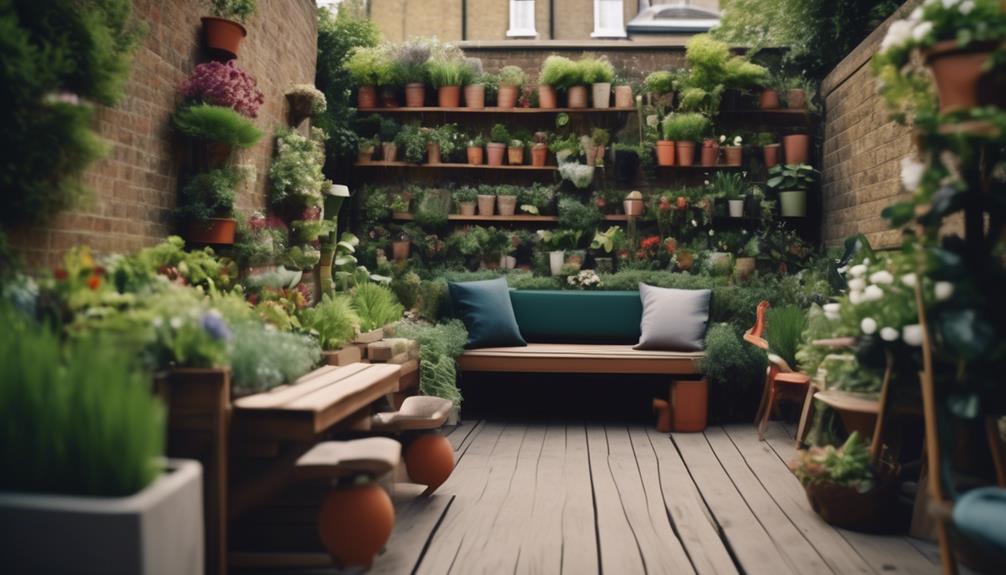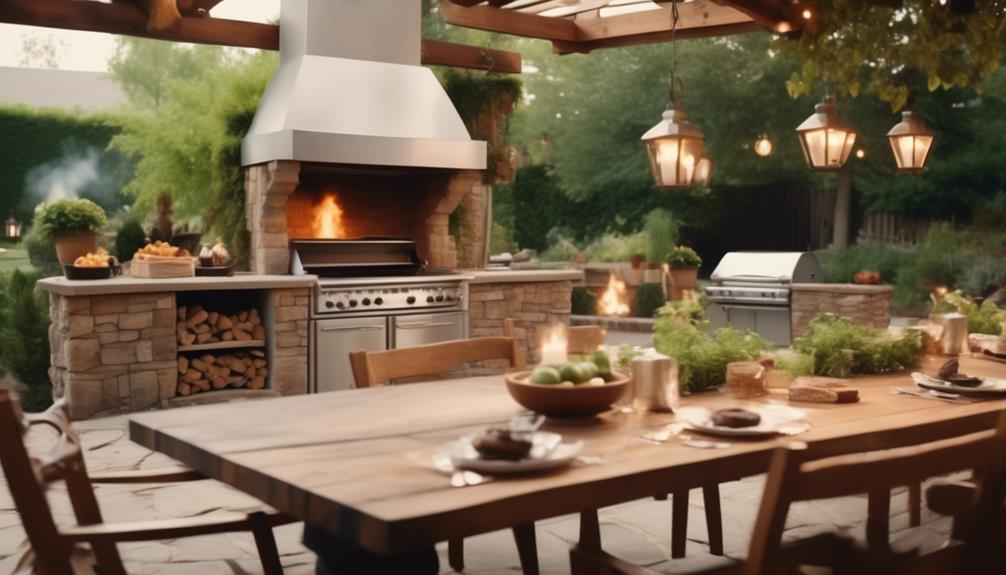Creating a backyard patio is like laying the foundation for a tranquil oasis in the bustling city, and choosing the right materials is crucial to ensure its longevity and aesthetic appeal.
Over the years, I’ve tried various materials for DIY projects in London, and I’ve come to appreciate the importance of selecting the right materials for the job. Each option has its own set of advantages and drawbacks, and understanding these can make a significant difference in the final result.
From traditional brick and stone to modern composite decking and gravel, the choice of materials can greatly impact the functionality and visual appeal of your outdoor space.
Key Takeaways
- Proper ground preparation is essential for all types of DIY London backyard patios.
- Regular maintenance, such as cleaning, sealing, and leveling, is necessary for most patio materials.
- Consider the upfront cost, long-term value, potential for repairs or replacements, and maintenance requirements of each patio material.
- Each patio material offers unique design options and aesthetic appeal, so choose one that suits your preferences, budget, and the climate conditions in London.
Brick
When laying a brick patio, it’s essential to properly prepare the ground to ensure a stable and long-lasting foundation. Start by clearing the area of any grass, rocks, or debris. Then, dig down about 8 inches to allow for a 4-inch gravel base and 4 inches of sand. Once the ground is level and compacted, lay landscaping fabric to prevent weeds from growing between the bricks. When it comes to brick patio designs, consider patterns like herringbone or running bond for a classic look, or basket weave for a more intricate design.
For maintenance, keeping the bricks clean is crucial. Regularly sweep the surface and rinse it with a garden hose. For stubborn stains or moss, a solution of water and white vinegar can be used. Sealing the bricks every 2-3 years will also help maintain their appearance and prevent weed growth between the joints. Additionally, inspect the patio for any loose or uneven bricks, and replace or level them as needed to prevent tripping hazards.
Stone
After successfully laying a brick patio, I understand the appeal of using stone for a different aesthetic and durability in London backyard patios. Stone patio design offers a timeless and natural beauty that blends seamlessly with the surroundings. When it comes to natural stone benefits, durability tops the list. Stones like slate, limestone, or sandstone are incredibly resilient and can withstand London’s variable weather conditions. These stones also provide excellent traction, making them a safe choice for outdoor spaces, especially during rainy days.
In terms of design, the versatility of natural stone is unmatched. From rustic cobblestone to sleek, modern pavers, there’s a stone style to suit every backyard aesthetic. The earthy tones and textures of natural stone create a warm and inviting atmosphere, perfect for creating a cozy outdoor retreat in the heart of London.
As someone who’s worked with various materials, I can attest to the practicality and long-term value of choosing stone for a DIY patio. The initial investment and effort are undoubtedly worth the beauty and longevity that a stone patio brings.
Concrete Pavers
I have found that concrete pavers are a versatile and cost-effective option for creating a durable and visually appealing patio in a London backyard. When it comes to installation, it’s essential to ensure proper ground preparation by leveling the area and providing a stable base. Compared to natural stone, concrete pavers are often more affordable, making them an attractive choice for budget-conscious DIY enthusiasts.
It’s important to consider the long-term maintenance requirements of concrete pavers. While they generally require less maintenance than natural stone, regular cleaning and occasional resealing can help preserve their appearance and longevity.
In terms of design options, concrete pavers offer a wide array of shapes, colors, and patterns, allowing for creativity and customization in patio design. When comparing costs, it’s worth noting that while the upfront cost of concrete pavers may be lower, they may require more frequent replacement or repairs compared to some other materials.
Ultimately, the choice of concrete pavers for a backyard patio should align with the homeowner’s aesthetic preferences, budget, and willingness to perform maintenance tasks.
Composite Decking
Choosing composite decking for your London backyard patio provides a low-maintenance, durable, and environmentally friendly option that mimics the look of natural wood. When considering the materials for your patio, it’s important to weigh the aspects of maintenance, cost, durability, and aesthetics. Composite decking excels in these areas, making it a compelling choice for your outdoor space.
| Aspect | Composite Decking |
|---|---|
| Maintenance | Low maintenance, requiring only occasional cleaning to keep it looking its best. |
| Cost | While the initial cost may be higher than some other materials, the long-term savings due to minimal maintenance and longevity make it cost-effective. |
| Durability | Resistant to rot, warping, splintering, and fading, composite decking withstands the elements, ensuring a long lifespan. |
| Aesthetics | Available in a wide range of colors and finishes, composite decking offers the natural look of wood without the maintenance requirements. |
With its minimal upkeep, longevity, and aesthetic appeal, composite decking proves to be a practical and visually pleasing choice for your DIY London backyard patio.
Gravel

When I installed my own London backyard patio, I found that gravel, like composite decking, offers a durable and low-maintenance option for creating a functional outdoor space. Gravel is a versatile material that can be used to create a variety of landscaping ideas, from traditional to modern designs.
One of the major advantages of using gravel for your patio is its minimal maintenance requirements. Unlike wood or concrete, gravel doesn’t require sealing, staining, or regular cleaning. To maintain a gravel patio, occasional raking and adding more gravel as needed is usually sufficient to keep it looking neat and tidy.
Additionally, gravel allows for excellent drainage, making it an ideal choice for areas prone to heavy rainfall. Gravel landscaping ideas can range from using different types and colors of gravel to create intricate patterns, to incorporating natural elements like plants and rocks for a more organic look.
When planning your gravel patio, consider the type of gravel that best suits your aesthetic and practical needs. Pea gravel, crushed stone, or river rock are popular options, each offering its own unique texture and appearance.
With the right design and maintenance, a gravel patio can be a charming and cost-effective addition to your London backyard.
Frequently Asked Questions
How Can I Reduce the Maintenance Required for a Brick Patio?
To reduce maintenance for a brick patio, I’d recommend exploring low maintenance solutions like composite decking or porcelain pavers. These innovative materials offer durability and easy upkeep, making them ideal for a hassle-free backyard patio.
Are There Any Specific Types of Stone That Are Better Suited for a London Backyard Patio?
When choosing stone types for a London backyard patio, consider factors like durability, aesthetics, and maintenance. I’ve found that natural stones like limestone and sandstone work well for patio installation, adding a timeless charm to backyard landscaping.
What Is the Best Way to Prevent Weeds From Growing Between Concrete Pavers?
I’ve found the best way to prevent weeds between concrete pavers is by using a combination of landscape fabric and polymeric sand. These alternative methods have proven effective in keeping my patio weed-free.
Can Composite Decking Be Easily Customized to Fit Irregularly Shaped Backyard Spaces?
Customizing composite decking to fit irregularly shaped backyard spaces can be easily achieved with the right tools and techniques. I’ve had success with this approach in my own DIY backyard patio project.
Are There Any Eco-Friendly Options for Using Gravel in a Backyard Patio?
Sure, eco-friendly landscaping is important to me. When it comes to sustainable patio options, using gravel can be a great choice. It’s low maintenance, allows for water drainage, and can be sourced locally.
Conclusion
After considering all the options, I’ve found that concrete pavers are the best material for DIY London backyard patios. They’re durable, versatile, and easy to work with.
They provide a clean and modern look, and are cost-effective. With the right tools and a bit of elbow grease, anyone can create a beautiful patio space using concrete pavers.
I highly recommend them for anyone looking to enhance their outdoor living area.

